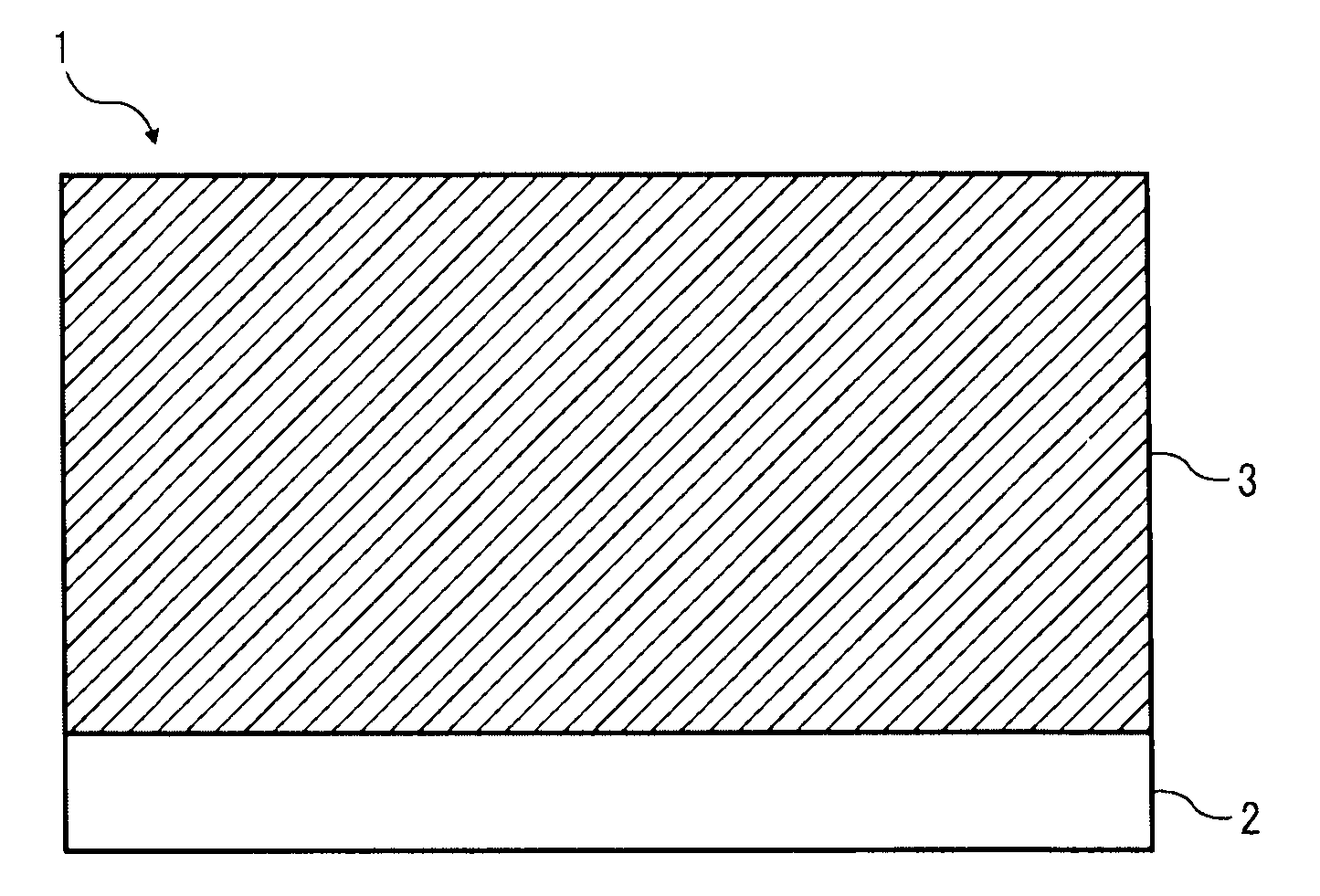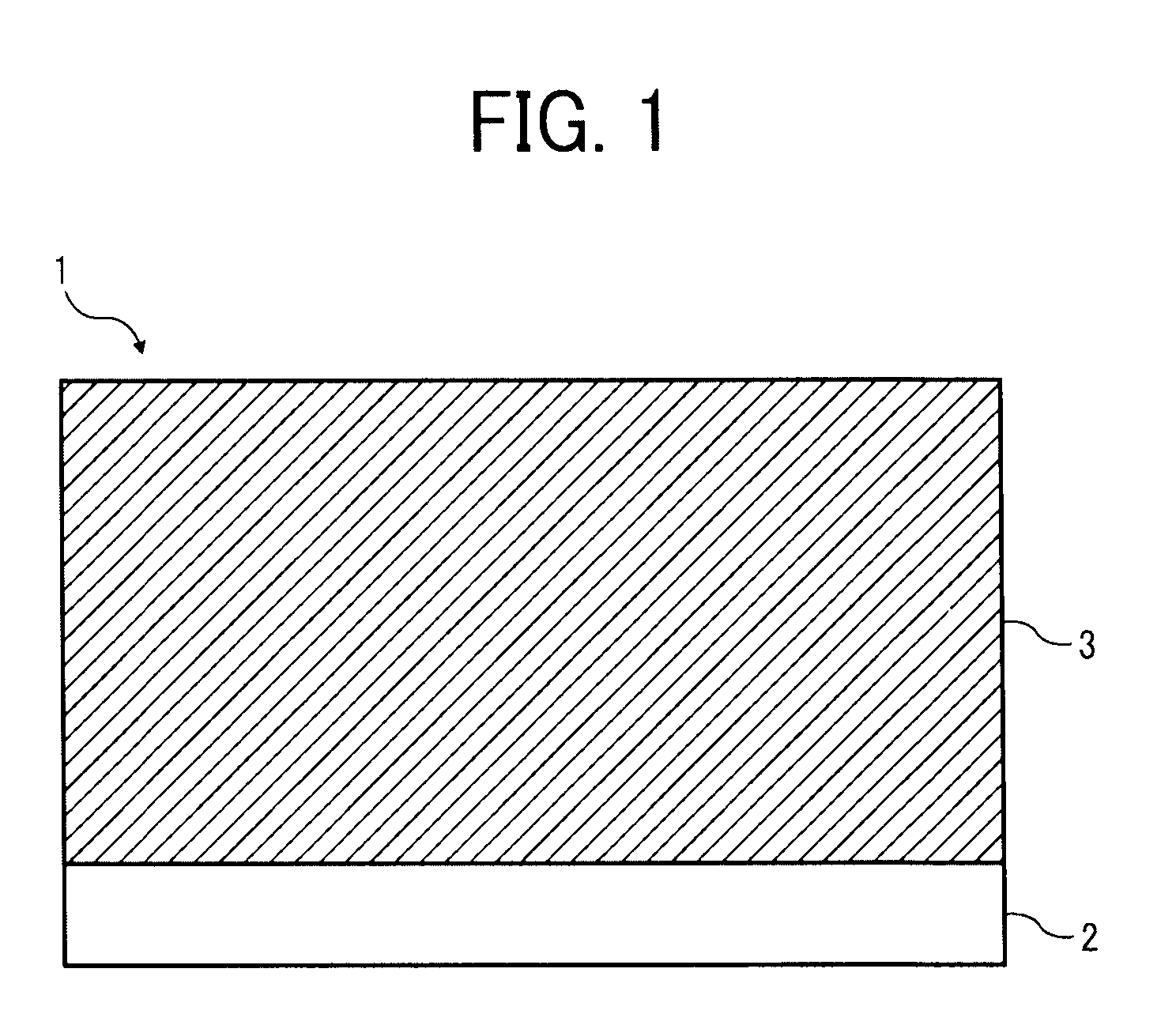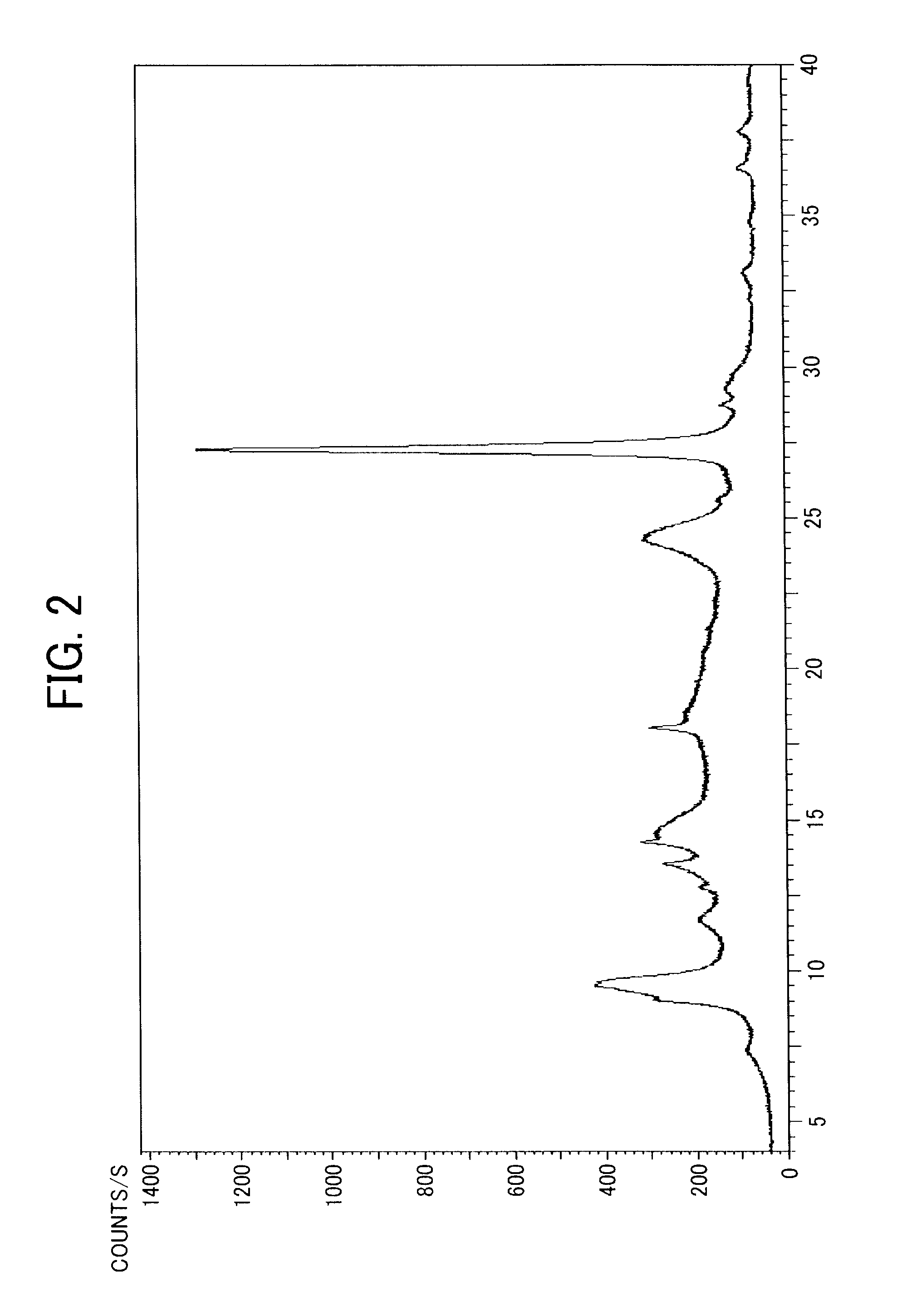Electrophotographic photoconductor
a photoconductor and electronograph technology, applied in the field of electronographs, can solve the problems of ozone pollution in the room environment, photoreceptors tend to be deteriorated physically or chemically, and the size of the apparatus becomes bigger and more complicated, and achieves high stability and high sensitivity
- Summary
- Abstract
- Description
- Claims
- Application Information
AI Technical Summary
Benefits of technology
Problems solved by technology
Method used
Image
Examples
example 1
[0087]0.4 g of said Y-type titanylphthalocyanine produced by said manufacturing example which has a Bragg (2θ) angle of 27.3±0.2° (FIG. 2) was dispersed together with 10 ml of glass beads and 100 ml of tetrahydrofuran for 5 hours on a paint shaker. The glass beads were removed by filtering and 90 ml of dispersion was provided. And then, 9 parts by weight of the hole transporting material represented by the formula (3a), 6 parts by weight of the diphenoquinone compound represented by the formula (1a) and 15 parts by weight of Z type polycarbonate were added and dispersed, so that a dispersion solution for coating of photoconductive layer was obtained.
[0088]The dispersion solution was applied to an aluminum cylinder and was dried at 120° C. for 1 hour to form a 30 μm-thick photoconductive layer for a single-layer photoreceptor was provided.
example 2
[0089]Example 1 was repeated in the same manner as described except that the hole transporting material represented by the formula (3a) was substituted for the hole transporting material represented by the formula (3b), thereby obtaining an electrophotographic photoconductor of Example 2.
example 3
[0090]Example 1 was repeated in the same manner as described except that the hole transporting material represented by the formula (3a) was substituted for the hole transporting material represented by the formula (3c), thereby obtaining an electrophotographic photoconductor of Example 3.
PUM
 Login to View More
Login to View More Abstract
Description
Claims
Application Information
 Login to View More
Login to View More - R&D
- Intellectual Property
- Life Sciences
- Materials
- Tech Scout
- Unparalleled Data Quality
- Higher Quality Content
- 60% Fewer Hallucinations
Browse by: Latest US Patents, China's latest patents, Technical Efficacy Thesaurus, Application Domain, Technology Topic, Popular Technical Reports.
© 2025 PatSnap. All rights reserved.Legal|Privacy policy|Modern Slavery Act Transparency Statement|Sitemap|About US| Contact US: help@patsnap.com



